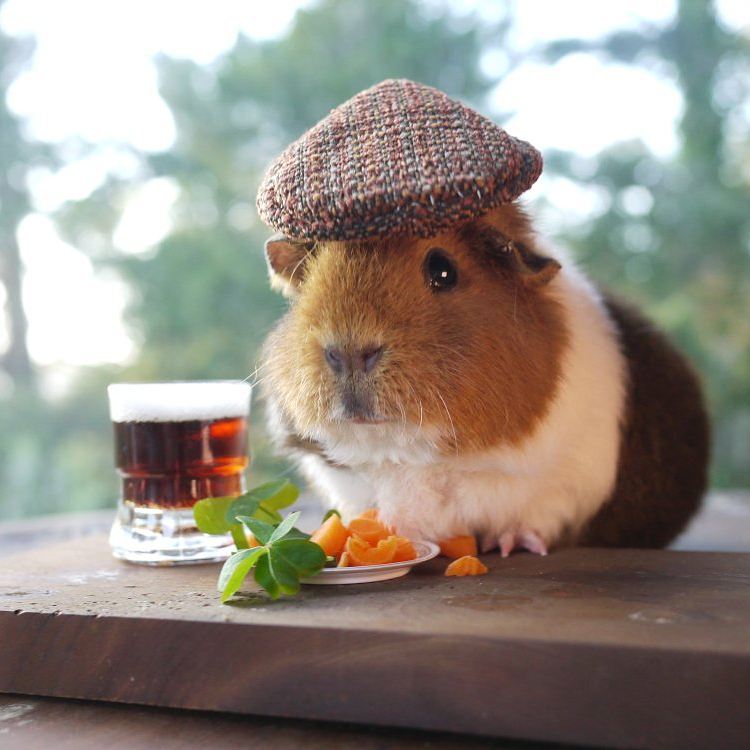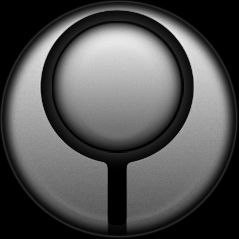Three reasons I can think of.
-
Americans don’t drink much tea. And soo…
-
Not many stores carry electric kettles.
-
Microwave tea.
yeah most homes in the usa have a coffee maker, microwave but no need for a kettle
The video literally tells you the reason. Because your appliances use 110V and are therefor less efficient than 220V appliances.
Uhhhhhh did you watch the video?
He goes to great lengths to point out that it isn’t an efficiency problem, and despite US residential standard outlets being 120VAC dedicated electric kettles are still the fastest way to boil water given other appliances (though induction cooktops are closing the gap).
The biggest reason dedicated electric kettles are not popular in the US is because we’re either boiling water for cooking some meal (pot is already on the stove so why bother with another appliance) or we’re making coffee. And the vast majority of coffee makers over here have the exact same circuitry and heating elements as an electric kettle. It’s just not standalone
Why don’t Americans use electric kettles?
Serves me right, I guess. I went by the thumbnail, remembered him talking about the difference in efficiency due to different voltages and took the wrong information to heart. So, I was wrong :D
-
I use an induction kettle on the induction stove top in Australia (240v).
What does this mean? Are you talking about a Whistley kettle on a normal stove?
Sort of, don’t have the whistle part, so annoying.
I think the better question is; why is there a weird stereotype in Europe that Americans don’t use these? We have one and just about everyone I know who regularly drinks tea does as well. It might not have been as prevalent a decade ago, but these are extremely common now.
Because we have microwaves.
We do? I’ve had one for over a decade
Use it all the time, but rarely for tea. Boiling a few eggs last night. Half the water in the electric kettle, half in the pot on high, join half way through to speed up the process. Making ramen, kettle. There is always some reason I find it useful.
Some do, but because of the prevalence of automatic coffee machines and microwaves there isn’t as much of a need outside specialty coffee drinkers.
The argument about speed and convenience doesn’t work in the US because of the outlet voltage as well. The 110-120v outlets don’t provide the same level of power to kettles so they can’t heat up as quickly. If you have a microwave it’s just as fast or faster.
He addresses this some. 120v is still a lot faster than boiling water on the stove. Coffee makers are significant, but boiling water in a microwave is generally a bad idea, given the risk of superheating (not that people don’t do it.)
I have never once (unintentionally) superheated water in a microwave, and I’ve been using them since about 1980 (and God knows we were idiots with them back then).
It just doesn’t happen - there are too many imperfections in our containers, and too many minerals for it to happen much.
I’ve experimented many times, and the reality is you have to work at superheating water in a microwave.
For me, it’s taken things like a brand new Pyrex measuring cup (glass), and filtered water. I can do it with other stuff, but I’ve had to boil/cool it multiple times, something that isn’t really going to happen.
He goes into it in another video on the channel. Almost everyone I know uses a microwave for water.
Huh. I have. Didn’t know what it was, but heated the water, dropped in a spoon and it boiled over aggressively even though it didn’t look like it was boiling.
We do use a kettle, this happened at work - the microwave there was a lot stronger than mine, and I couldn’t get the water to look like it was boiling.
Same here, happened when I was young. Thankfully I wasn’t holding it in my hand, it was on the counter. I didn’t get burned
Voltage isn’t equal to the level of power though, a 110v can provide the same power as 240v. I think tea drinking just isn’t as popular in the US.
It’s not, but you need over twice the current to supply the same power, and since many safety measures and physical constraints limit the current, it effectively means the power limit is more strict.
This is assuming the same cables and breakers etc being used for both voltage ratings. I know there are specific wiring and connection systems for high amperage stuff in 110v places (probably for some 220-240v places too, but I’m in a place with notoriously bad electrical everything, fuck if I know)
Makes sense, I think you’re right and that the wattage still ends up being lower overall in the US.
I’m in US. It takes roughly 2.5 minutes to reach 200F (coffee), and roughly 3 minutes to reach 213F (tea) and I’m talking 1 liter of water.
Also, good luck fitting 1 liter in most microwaves.
The niche coffee scene in the US uses them, they are excellent for pour overs, French press, etc. But they are not widely popular since dedicated coffee machines are most commonly used.
For anyone concerned about the quantity of plastics you consume, coffeemakers have a lot of plastic but kettles do not.
My electric kettle has plastic parts. Also my pour over funnels are plastic. This is not a meaningful distinction between the two.
Maybe I was looking at the bougie ones then.
My kettle is glass and stainless, and everyone I noticed was either glass or stainless. Plastic is only on. The outside: lid and base, and you’re not drinking out of those
My pour over funnel is silicone. Like plastic but different. Assuming it’s food grade, less likely to be harmful
I think it’s fair to say that kettles and funnels can be found in non-plastic materials. And I have to admit I’ve never seen an”coffee maker” that wasn’t plastic. I suppose a restaurant grade Bunn machine has a stainless steel basket and a glass carafe, but there isn’t anything for the home. Unless someone is about to tell me I’m wrong, which, this being Reddit, someone probably is.
Because nobody fucking told us about them! I just got one last year and it’s been amazing!
Safer for kids as well. They don’t stay on and apparently people say water without something breaking the surface tension can pop in the microwave when you go to pull it out (never had it happen to me, but I have only tried a handful of times in my life… always had a teapot or electric kettle). … Or a pot. I used to just throw the teabags in a pot and pour it into a pitcher / cup after
I’m Americwn and I use one. It’s great.
Got into French press coffee a few years ago and bought one.
Same here. Got it for French press coffee for me and hot cocoa for the kids.
Realistically I rarely use it and I really can’t claim it saves noticeable time but it’s so simple and and cheap an appliance that i consider it well worth it
I’ve used one for ages, it especially helps when boiling water on the stove. I heat it in the kettle first and then pour it in the stove pot. So much faster!
But one more thing to own, store, manage, for a little convenience.
I can boil 2 cups of water in the microwave in 5 minutes. Or 4. Takes about the same amount of time.
First of all there are real risks to boiling water in the microwave, but I get why most people ignore them. Second of all, not ALL of us have microwaves (I don’t), third of all, it’s not “one more thing” if it’s an appliance used every day for multiple reasons. You seem to have an odd hate towards kettles.
Five fucking minutes OMFG. Just get a 240V outlet in the kitchen so you can plug in a proper kettle.
You can’t. You can’t use European 240V kettles in the US because of phase differences (or something - an electrician told me so and declined the job to give me an outlet even though he accepted and performed other work for me).
No one to my knowledge has marketed a 240V kettle for the US market. It’s a business idea for anyone who wants to pick it up.
The issue isn’t the voltage. It is the wattage. UK kettles draw 3kW. US outlets are (typically) only rated for 2.4kW. We can easily get dedicated 30A, 120v outlets that will provide 3.6kW.
US 240v is not the same as UK 240v.
The UK uses a single live phase, (240v with respect to ground), and a neutral (0v with respect to ground).
The US uses two live phases. Each phase is 120v with respect to ground, but they are 180 degrees apart from eachother. Phase to phase is 240V, but either phase to ground is 120v.
A UK kettle expects its neutral phase to be at the same potential as ground, which can’t happen in the US without a 1-to-1 transformer
Sounds like it would amount to much the same thing: you’d need some special wiring, and a kettle made to take advantage of it. No one has made that kettle.
Just curious though, since you seem to understand electricity better than I.
If it’s as you say, and all we need to do to get more energy is to raise the amps, then why do Americans still install 240V lines for laundry machines, ovens, large power tools, etc etc? Why don’t any of those just do what you said, and operate 120V at 30 amps?
Watts are a unit of power. Regardless of voltage, if your appliance is drawing 3000 watts, it is heating up the same as any other device that draws 3000 watts.
Wires are not sized on the number of watts they can carry. They are sized on the number of amps they carry. If a wire is sized for 10amps, and you are using 12v, you can only get 120 watts through it. Increase the voltage to 120v, and you can get 1200 watts through that same wire. Increase to 240v, and you can get 2400 watts from that wire. The higher the voltage, the less copper you need to carry it. You need thicker insulation to handle that increased voltage, but insulation is cheap. It’s more dangerous to humans who come into contact with the wires, but you can build in additional methods to restrict human contact, such as fancy plugs and sockets.
The UK and Europe had a severe copper shortage when they rebuilt after WWII. They standardized on 240V to reduce the size of wires they needed in their homes. Instead of dozens of, low-amp circuits, they installed only a couple high-amp circuits for their entire home. They designed their household wiring so that the same circuit that powers the alarm clock on their nightstand is also used for their 3000-watt space heater.
They further reduced copper consumption by using undersized wire in a “ring” circuit instead of properly sized wire in a “branch” circuit. Failures in ring circuits are extraordinarily dangerous, because there is no immediate indication that they have failed. Each outlet receives power from two sides of the ring; if one side fails, they draw all their power from the other side, overloading the ring.
The US solution to these problems is intrinsically safer household wiring. We threw copper at the problem, because we had the copper to throw. But what we got in return was a vastly safer system. We managed to get a 240v system that only carries the risks of a 120v system.
I was tempted. If 240v kettles or other small appliances were generally available, I would have.
People add all sorts of silly stuff to their kitchens, like pot filler faucets, but one or more 240v outlets would add real value
We do? I have one. Know lots of people that have them. They sell them at Walmart for like 20 bucks.
I think certain regions of the US do have them and others do not at all.
For example, where I am at, I have only met one other person in real life that has one. But I do hear about a lot of my friends on the east coast having them. Dunno.
Australian looking bewildered with their kettle and microwave I like making a cup of tea while I reheat my lunch.
Do Americans have multiple microwaves?
I’m an American, and yes, I have two.
One of them is a cheap $30 one we bought when we moved in and needed to heat meals from frozen because we didn’t have pots and pans yet, and it’s now in its box in the storage closet as a backup in case our good microwave breaks, but I do have two
I have an induction Cook top just seems to be a waste.
At one point many years ago, there was an fad for a “hot shot” small appliances. I guess it’s a similar functionality to a kettle but with more moving parts. It disappeared as quickly as it appeared though.
Holy crap, they still exist!
My mom still uses hers. It’s great.
I have one too! It’s super old but works amazingly for small things like individual cups of tea or hot chocolate for the kids. Got it as a white elephant gift that someone thought was a joke. I was super excited to get it. We have several kettles too.

Why do people think we don’t use these? Almost everyone I know has one.
No you don’t, the justice department found no evidence of kettle use
Case closed! Wrap it up everyone. Pay no attention to the single missing page in the Walmart catalogue submitted as evidence.













